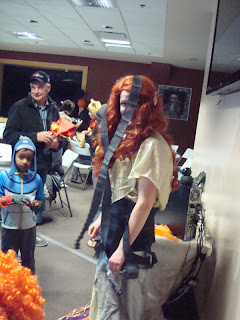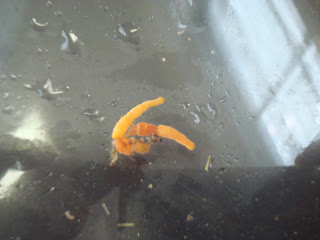Taking care of many different marine animals can be very challenging. But the staff here at the Fundy Discovery Aquarium soon develops a routine. For the next few blog posts, I will discuss what goes on behind the scenes and what it takes to maintain aquarium creatures 365 days a year.
We typically have around 15 different species of fish on display and lots of invertebrates such as lobsters, crabs, snails, seastars, sea cucumbers and urchins, mussels, scallops, sea slugs, and anemones. Many of those invertebrates are filter feeders, which mean they filter the ocean water and keep plankton for food. This is why we have seawater pumped right into the touchpool, in order to have a fresh supply of plankton. But most others need to eat either bits of meat or marine plants. The prickly sea urchins and the small periwinkles are the ones that require a fresh supply of seaweed, although few people know that lobsters need to get their “salad” every now and then.
For all others, we typically thaw a number of herring in order to cut them into chunks. The lobsters and larger fish such as the halibut and sea ravens need whole fish or halves, but for everything else, we need to cut the fish into 1-inch thick morsels. The crabs in the touchpool eagerly grab a piece by the claws, and shred the meat using their mandibles near the mouth. Fish such as ocean pouts and sculpins swallow their food whole. Some species like cunners can tear pieces off a larger bit using very sharp teeth.
But so much more needs to be done. Stay tuned for the next post!




















































